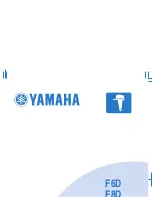MPC555
/
MPC556
DEVELOPMENT SUPPORT
MOTOROLA
USER’S MANUAL
Rev. 15 October 2000
21-7
21.2.4.3 Detecting the Assertion/Negation of VSYNC
Since the VF pins are used for reporting both instruction type information and queue
flush information, the external hardware must take special care when trying to detect
the assertion/negation of VSYNC. When VF = 011 it is a VSYNC assertion/negation
report only if the previous VF pins value was one of the following values: 000, 001, or
010.
21.2.4.4 Detecting the Trace Window End Address
The information on the status pins that describes the last fetched instruction and the
last queue/history buffer flushes, changes every clock. Cycles marked as program
trace cycle are generated on the external bus only when possible (when the SIU wins
the arbitration over the external bus). Therefore, there is some delay between the in-
formation reported on the status pins that a cycle marked as program trace cycle will
be performed on the external bus and the actual time that this cycle can be detected
on the external bus.
When VSYNC is negated by the user (through the serial interface of the development
port), the CPU delays the report of the of the assertion/negation of VSYNC on the VF
pins (VF = 011) until all addresses marked with the program trace cycle attribute were
visible externally. Therefore, the external hardware should stop sampling the value of
the status pins (VF and VFLS), and the address of the cycles marked as program trace
cycle immediately after the VSYNC report on the VF pins.
The last two instructions reported on the VF pins are not always valid. Therefore at the
last stage of the reconstruction software, the last two instructions should be ignored.
21.2.4.5 Compress
In order to store all the information generated on the pins during program trace (five
bits per clock + 30 bits per show cycle) a large memory buffer may be needed. How-
ever, since this information includes events that were canceled, compression can be
very effective. External hardware can be added to eliminate all canceled instructions
and report only on branches (taken and not taken), indirect flow change, and the num-
ber of sequential instructions after the last flow change.
Table 21-4 Detecting the Trace Buffer Start Point
VF1
VF2
Starting point
Description
011
VSYNC
001
sequential
T1
VSYNC
asserted followed by a sequential instruction. The
start address is T1
011
VSYNC
110
branch direct taken
T1 - 4 +
offset (T1 - 4)
VSYNC
asserted followed by a taken direct branch. The
start address is the target of the direct branch
011
VSYNC
101
branch indirect tak-
en
T2
VSYNC
asserted followed by a taken indirect branch. The
start address is the target of the indirect branch
F
re
e
sc
a
le
S
e
m
ic
o
n
d
u
c
to
r,
I
Freescale Semiconductor, Inc.
For More Information On This Product,
Go to: www.freescale.com
n
c
.
..

















